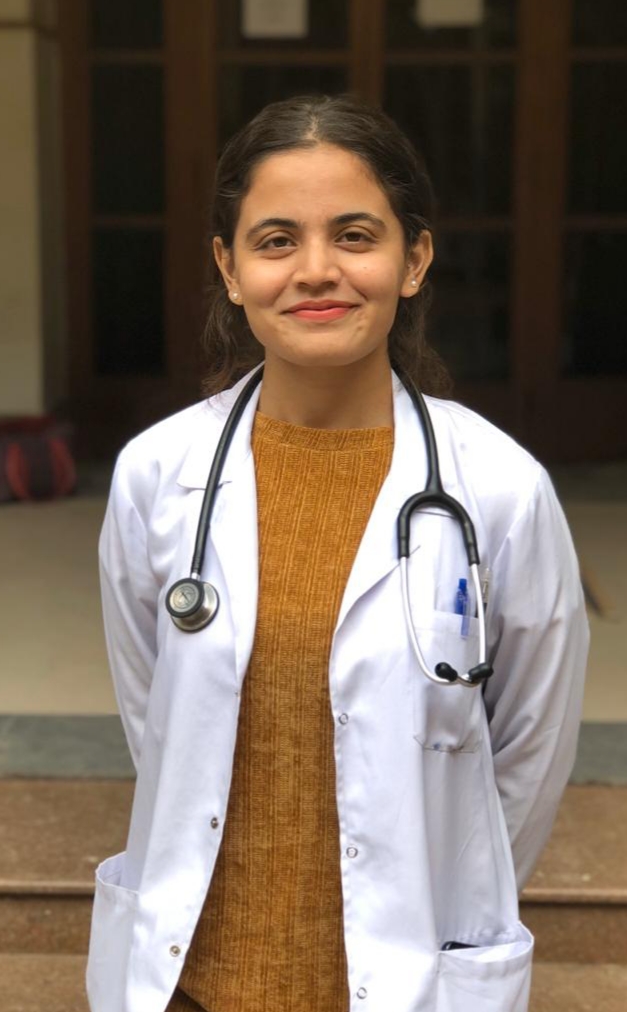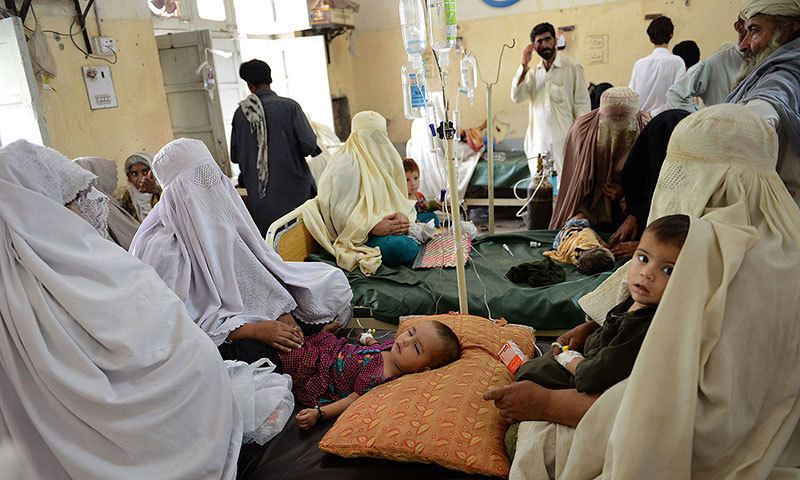Often heralded as the messiahs for those most in need, doctors in Pakistan have held a reverence few could claim. The profession itself has been glorified for decades. While one can argue as to the validity of this status and doctors themselves might feel patronized as a result of it- one thing is for sure, this status of glory is slowly waning away.
Recent times have sparked repeated cases of healthcare professional assault and public hospital property being thrashed by violent attendants. Patients will always blame the physicians and physicians will continue to change the way they practice in return, afraid for their safety. While such incidents can only be condemned in the strongest of languages, it seems as though we’re all unanimous on one thing. Such incidents are a sign of a failing system.
Public healthcare in Pakistan has long been neglected. One only has to visit a tertiary care public hospital to realize the multitude of problems we need to address. Let us, however, divide these problems and the threats they pose in two major categories- issues internal to the infrastructure of the hospitals and those external to it. The debacle isn’t as nuanced as this; however, we shall try to make it as simplistic as possible.
The federal government estimates a considerable percent of the total fiscal year budget to healthcare. Provincial governments further allocate the budget to various healthcare departments. As a struggling economy with a GDP growth rate of 2.6%, the budget allocated to healthcare is inadequate. But how do we truly know that the budget is inadequate and it is not, as one would assume in a country fighting corruption, a case of money being channeled to fill pockets of those in charge? While it is true that each year billions of rupees are allotted to schemes and projects that only exist on paper, the fact is that it’s not our only problem.
Pakistan has an ever-growing population. It is the 5th most populated country and for the state of its economy, this does not bode well. Lack of resources is doubled when the demand for those resources increases. As an intern in one of Pakistan’s busiest tertiary care hospitals, it was not uncommon to see medications run out of stock each day. One would have to write requests to NGOs working on donations and they would waive a portion of the cost. Patients would then be expected to buy these medications. For starters, transparent, accountable investment is key to developing a good healthcare system.
In January 2018, I had the chance to visit Tharparkar and adjoining towns for awareness sessions in collaboration with a relief eye camp. While on our trip, we were shown around the town and then taken to the local Civil Hospital of that town. The plan was to use one of the wards there for our sessions. The sight that awaited us was one I can never forget. The hospital was a ghost town. There were no patients, doctors, infrastructure except a yellow-walled building crumbling before us.
There was a massive pool of sewerage water right beside the entrance, there was a shiny new board in the basement claiming to be a Protection House for Women but by the looks of it was exactly the kind of place any woman would seek protection from. There was one room that had multiple hospital beds. I looked inside and there was a nest of pigeons in one of the mattresses. The gory details of this hospital are many. As an intern in Karachi’s Civil Hospital, I could yet again see from miles away how these hospitals in small towns functioned because patients from far off would come to us braving days of travel with things as urgent and basic as snake bites and dog bites. The structure of healthcare goes like this – you have primary healthcare i.e. your local general physician.

Then you have secondary healthcare which is a multidisciplinary community setup. And lastly, we have tertiary care hospitals like Civil, Jinnah, Agha Khan Hospital, to name a few. The setup ensures that tertiary care hospitals aren’t overburdened with cases that can be easily handled by a primary care physician. It ensures that a patient can receive initial care and be stabilized before they’re referred to a tertiary care hospital if need be. Lack of proper primary care and secondary care setups places all the burden on our tertiary care hospitals.
There must be regulated, monitored and PMDC certified primary care setups as well as secondary care setups. This is even more important in the case of trauma. Trauma is the leading cause of mortality worldwide and in Pakistan, it is even bigger of a burden as it causes death and disability in the country’s GDP-dependent population. According to Dr. Haris Sheikh, who worked extensively for First Response and Mass Disaster in Karachi, “ a central EMS system with equipped ambulances and trained paramedics, a functional disaster management cell and a Level 1 trauma center is essential when it comes to trauma care. The clock starts ticking the moment trauma occurs.
Keeping in mind the concept of golden hour, necessary steps can be taken even before a casualty reaches the hospital, the most important of which are resuscitation and activating essential services like CT, Cath lab, or even ORs with appropriate teams ready to take care of the casualty upon arrival. Sadly, none of the aforementioned essential services exist in our system resulting in on-site manhandling of casualties and a delay in the in-hospital treatment, which in certain circumstances can prove catastrophic”. This brings us to the second half of our problem- in hospital inadequacies.
Impediments to healthcare within hospitals are multifold and apparent to anyone who has set foot in public hospitals. The plot gets thicker for those who have worked in the healthcare system. Apart from
the significant roadblock coming from lack of resources and inadequate systems, the infrastructure of most tertiary care and secondary care hospitals lacks cohesion. For instance, a patient presenting to the ER must undergo triage, be assessed further, admitted if need be, or set up for an appointment at a later date.
There is an evident lack of assignment of duties and protocols and a lot is left up to the decision-making of the doctors on calls. Diagnostic services are often absent and patients have to run back and forth for getting tested. For example, it is not uncommon to find the CT scan machines and MRI machines at Civil Hospital Karachi in non-working condition for months. Patients, even those who have sustained traumatic injuries and need urgent head CTs or have had a stroke and need immediate assessment for life-saving treatment, have to be referred to other places to get a CT scan. Similarly, most tertiary care hospitals do not have 24/7 Cath Lab services for patients reporting with MI or heart attack as it is commonly known and has to be referred to centers like NICVD and Tabba. A lot of this also has to do with a lack of trained personnel, which in itself is a multi-faceted problem.
The doctor to patient ratio in Pakistan in appalling. We need newer training positions for physicians, regular board exams to ensure they are up-to-date, accountability systems, and recruitment of paramedical staff, which is not only limited to nursing but can create space for respiratory therapists, perfusionists, physiotherapists, pharmacists, etc. This allows a more holistic approach to treating the patient. Perhaps most importantly, job satisfaction amongst healthcare providers, be it nurses or doctors is shallow in public hospitals. Their salaries and stipends aren’t regular; their employment offers no perks nor insurance of any kind, working hours are indefinitely laborious, facilities provided at work are subpar and would shock most people at the inhabitable state of on-call rooms and most days, they are also afraid for their safety and security while at work.
Those in power continue to turn a blind eye to these problems and very little importance is given to attempt to change things. In fact, change is almost scorned at. While the rest of the world looks at Artificial Intelligence and 3D printing to facilitate medical diagnostics and therapeutics, hospitals in Pakistan barely have a well-integrated IT system to record patient information and regulate drug prescriptions. The fact that some of the well-run departments in our public hospitals are those being run on charity, donations, and efforts of philanthropic people is a silent but persuasive reminder of the inefficiency of the administration. SIUT, NICVD, PWA are all such brilliant examples.
Healthcare, like education, is currently struggling in Pakistan. While there is so much to be done, we have hope. New doctors are joining the force each day and new organizations are always on the front running blood banks, pediatric emergencies, and sourcing funds for patients. Ever abysmal situation has heroes and so does ours. We just need to know where to start and have the will power to do so.

Dr Maheen Khan is a recently graduated doctor aspiring to work towards a career in Internal Medicine. An avid storyteller and reader, she loves writing about her time as an intern at Civil Hospital Karachi, her experiences in medicine, and her insight into the public healthcare system. She hopes to use her flair for words and her passion for public speaking to reach out to remote communities on issues regarding healthcare.

